“I’m gonna give my Mouse some laughing gas, add some zoomies, throw on some big baloneys, and hit the quarter-mile with my Tri-Five.”
OK–who talks like that really? Probably no one, although hot rodding does come with so many unique words and slang terms that it’s almost impossible to think of them all.
We tried anyway–and we even had the big ‘n littles to call this the “ultimate hot rod glossary.” Judge for yourself and tell us what we missed.
A-C
A-Bomb: any Model A Ford that has been extensively modified.
A-Bone: slang for the Model A Ford, which was produced between 1928 and 1931.
Alky: alcohol fuel used for racing, including methanol or methyl alcohol.
Antique: by most club standards, any vehicle that is at least 25 years old.
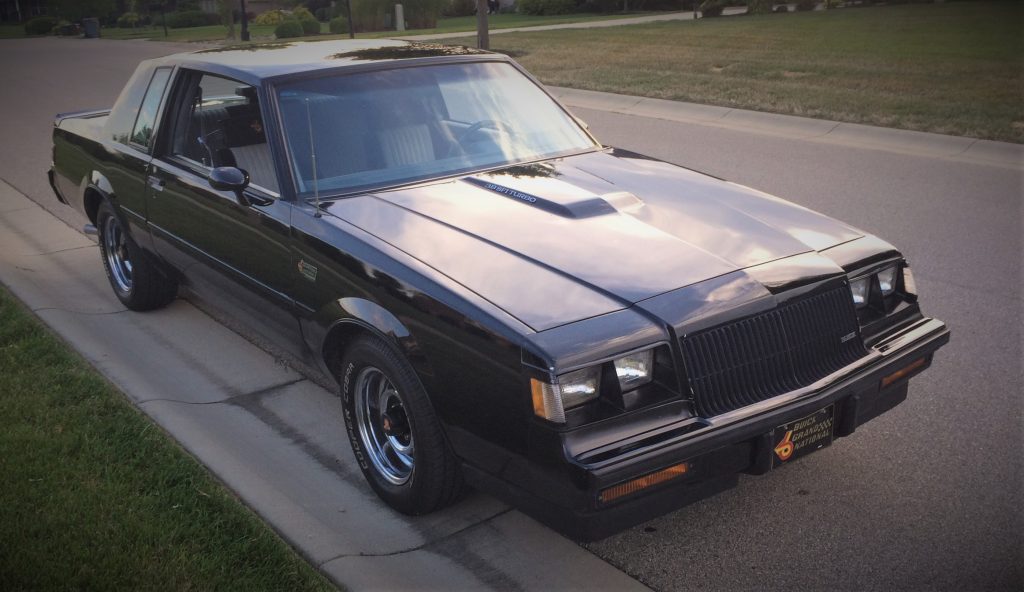
Appletons: fender-mounted spotlights, named for the manufacturer.
Baby HEMI: any early HEMI engine, which was produced by Chrysler’s Dodge and DeSoto divisions and had smaller dimensions and displacement than Chrysler’s other HEMI offerings.
Baby Moons: small, chromed hubcaps that only cover the center of the wheel.
Backhalf: to reconfigure any stock vehicle’s rear components (narrowing the rear-end, adding wheel tubs, etc.) typically for better drag racing performance.
Bagged: having a custom airbag suspension system.
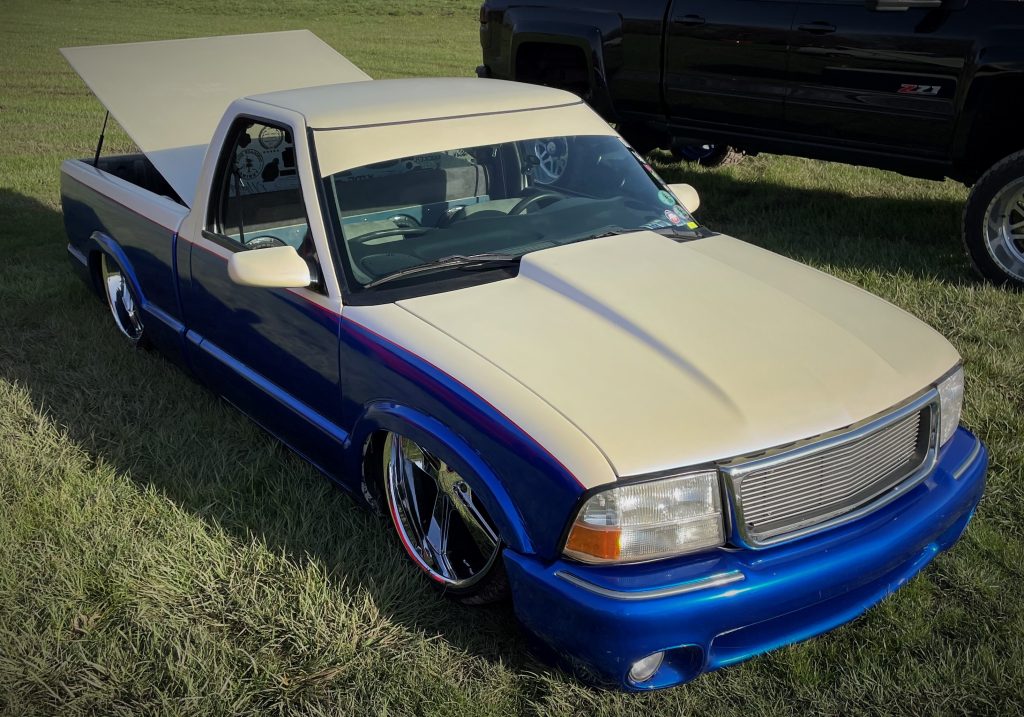
Balanced: normally used to define balancing the rotating mass (crankshaft), but could also could refer to matching the weights of the pistons and rods.
Baloneys: automotive tires, especially large rear tires used on hot rods or drag racing vehicles.
Banger: a slang term used to express the number of cylinders in an engine (four-banger = four-cylinder, etc.).
Banjo: an early style rear-end that resembles the shape of a banjo.
Barn Find: any vehicle that was stored away in a barn or similar structure for an extensive period of time and then found and restored.
Basket Case: any vehicle that was completely disassembled–or needs to be completely disassembled for restoration or modification purposes. (Referred to as basket case because the process often involves gathering and collecting small parts in a basket over a long period of time).
Beach Wagon: a term for a station wagon used mostly in New England
Beam Axle: any automotive front axle featuring the cross-sectional shape of an I-beam.
Belly Pan: sheetmetal body panel, which has been custom fabricated to tightly conform the underside of a racing vehicle.
Beltline: the line running around a car’s body formed by the bottom edges of the side windows.
Big ‘n Littles: a hot rod or dragster tire combination which employs large rear tires for traction and small front tires for reduced rolling resistance.
Binders: brakes.
Blower: a supercharger.
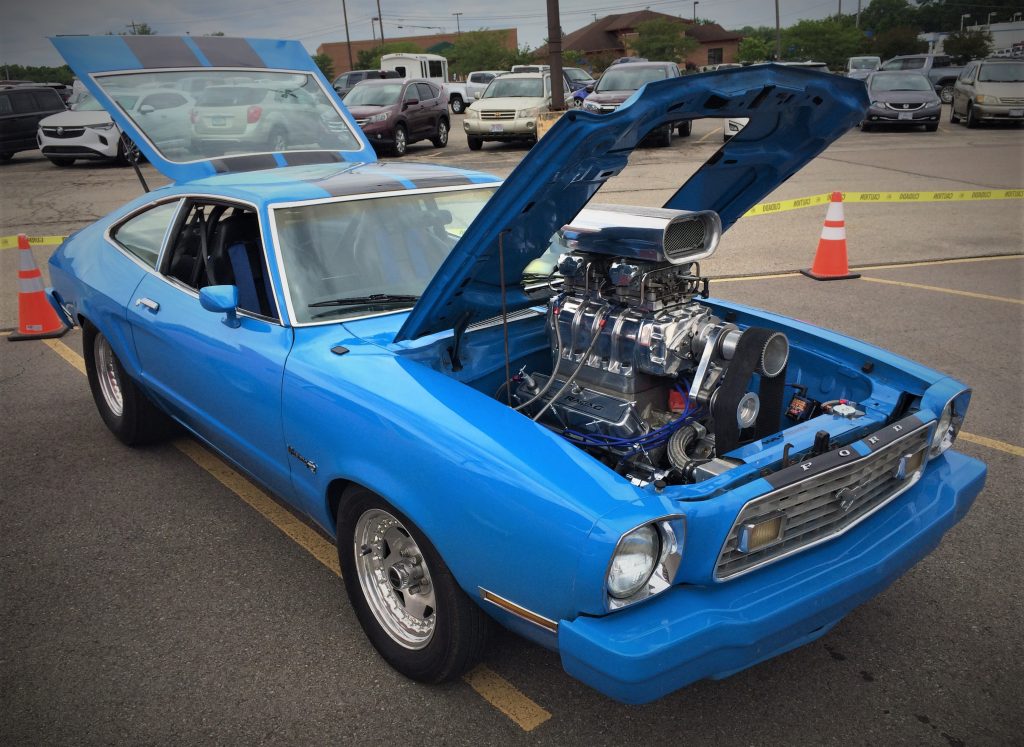
Blown Gasser: a supercharged, gas-burning engine.
Blueprinting: the act of ensuring the dimensions of the parts in the engine are more accurate and, therefore, closer to the original engine blueprint values.
Boattial: a speedster with a tapering (V-shaped) rear section.
Bobbed: shortened, as in bobbed fenders or frame rails.
Bonnet: the hood over the front engine.
Brougham: an early motoring term signifying a closed car for two or four persons.
Bullets: chromed, bullet-shaped extensions used on bumpers, grilles, and wheels.
Bumpstick: slang for camshaft.
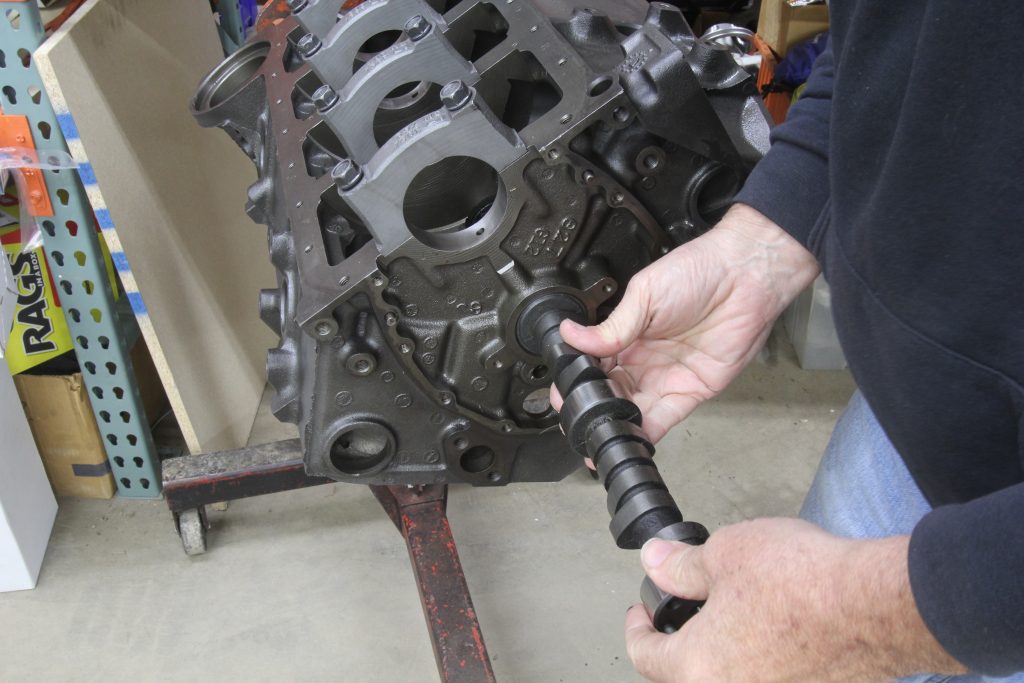
Business Coupe: a simple two-door coupe, without a rumble seat, built in the mid- to late-thirties. (Also referred to as a Businessman’s Coupe).
Cabriolet: a convertible with windows.
California Top: a fixed rigid top applied to a touring car, replacing the regular folding top.
Carson Top: a solid, removable roof that is covered with a soft material.
Channeled: cutting the floor so the body rests around the frame rails rather than sitting on top of the frame. This gives an overall lowered appearance.
Chopped: a hard-top car that has had its roof lowered.
Classic: a fine or unusual motorcar typically built between 1925 and 1948, often distinguished by its fine design, high engineering standards, and superior workmanship.
Club Coupe: a two-door closed car with rear seat.
Coach: a two-door sedan.
Convertible: an open-top car with a folding roof and side windows.
Coupe: a closed car with two doors.
Crate Engine: a factory-built, ready to run engine.
Custom: a car that is modified in visual appearance through imaginative and technical methods to create a distinctive vehicle.
Cycle Fenders: usually a front and sometimes rear fender similar to that used on a bicycle, which follows the curvature of the wheel.
D-L
Dago: a dropped front-end.
Decked: chrome details and trim removed from the trunk and smoothed over.
Deuce: 1932 Ford.
Digger: drag racing slang for dragster.
Donor Car: a vehicle used to provide parts and hardware for another project vehicle.
Dropped: a significantly lowered vehicle.
Dual Quad: two four-barrel carburetors.
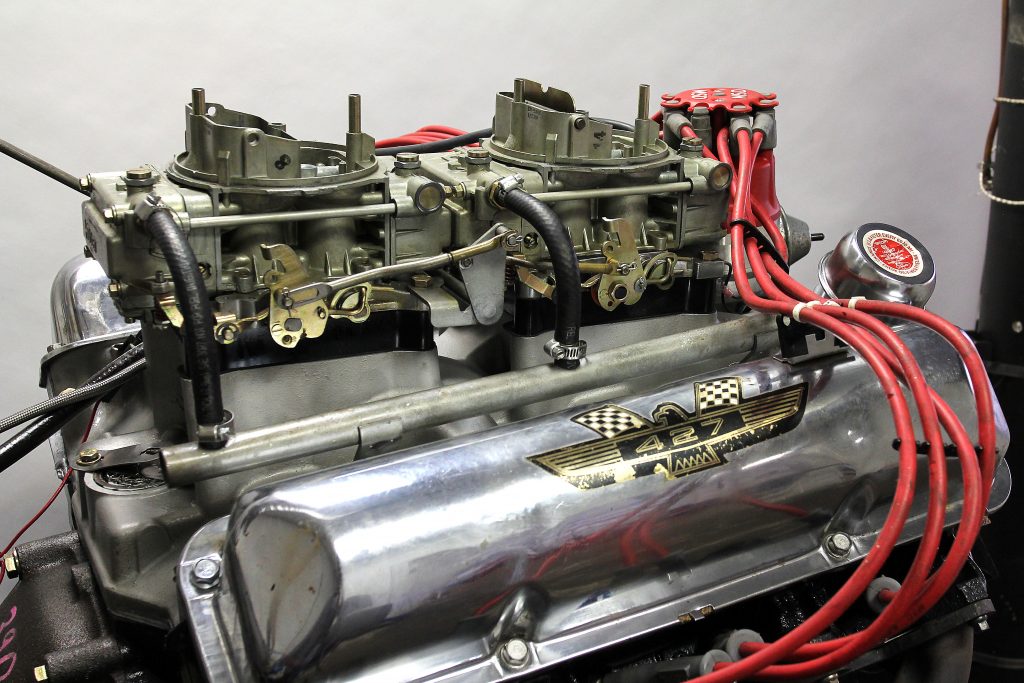
Dutchman Panel: the metal body piece between the rear window and the trunk.
Duval Windshield: a split V-shaped raked chrome-plated windshield designed by George DuVall
Exotic: a high-priced, two passenger roadster, coupe, or convertible, usually from Europe (a few exceptions exist such as the Shelby Cobra).
Fade-Aways: fenders that taper back into the body.
Fat Fendered: Fords built between 1935 and 1948 that were wide and rounded in appearance.
Fender Skirts: body panels that cover the rear wheelwells.
Filled Roof: a roof that has a welded steel panel instead of the original wood-and-fabric insert.
Flamethrowers: tailpipes that shoot flames (unburnt gas).
Flathead: an L-head or side-valve engine, including the highly popular Ford Flathead built between 1932 and 1953.
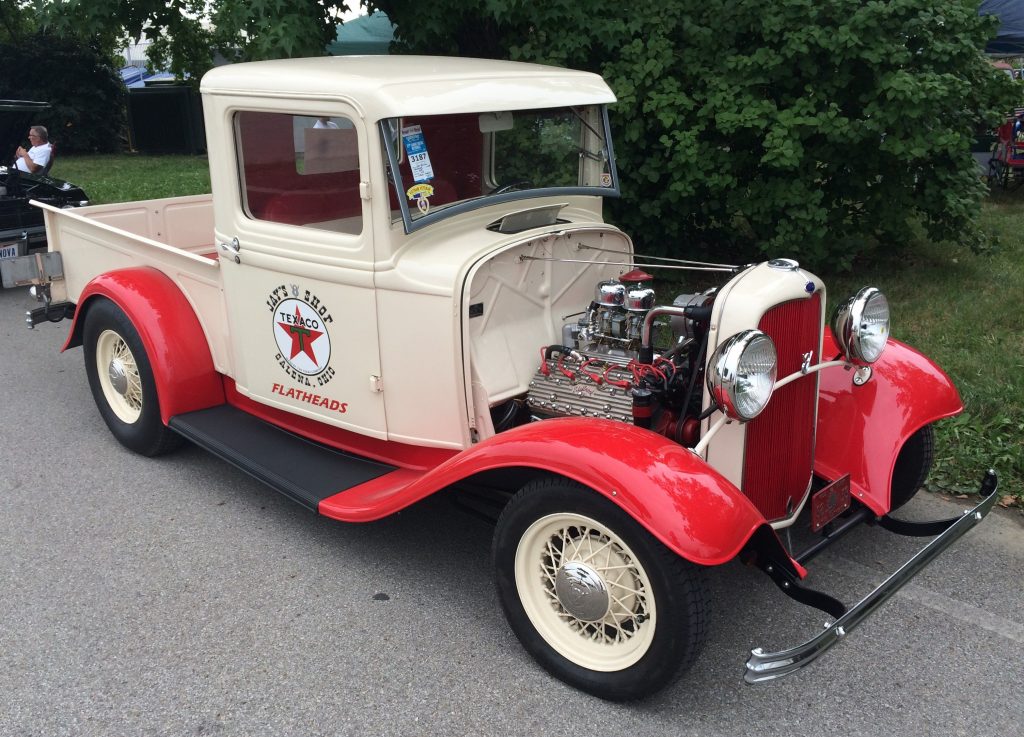
Flopper: drag racing slang for a Funny Car.
Fordor: a four-door Ford sedan.
Frame-off Restoration: a restoration project in which the entire vehicle is completely disassembled with all parts cleaned or replaced as necessary, so that the restored car meets the original factory specifications as closely as possible.
Frame-Up Restoration: not as detailed as a frame-off restoration, this process involves restoring the paint, chrome, interior, and mechanicals to original specifications without complete disassembly of the car.
Frenched: recessed head or tail lights that are smoothed into the body panels.
Front Clip: either the front-end sheetmetal or the section of frame in front of the firewall.
Glasspacks: loud aftermarket mufflers, which typically use a straight-through perforated tube wrapped in fiberglass.
Goat: Pontiac GTO.
Hair Dryer: slang for turbocharger
Headers: fine-tuned exhaust manifold that is more efficient than stock.
HEMI: an engine popularized by Chrysler that has hemispherical combustion chambers in its cylinder head.
Highboy: a fenderless customized Model A Ford coupe or roadster that sits at stock height.
Hot Licks: flames painted on the side of a car.
Hot Rod: traditionally, an older vehicle with “low-buck” performance modifications.
Kit Car: a reproduction of an existing automotive design, sold in various stages of production to allow for completion and customization by the builder.
Lakepipes: side-exit exhaust pipes located under the rocker panels.
Land Yacht: a large, luxury car, usually referring to the chromed, finned, oversized vehicles of the late fifties to early sixties.
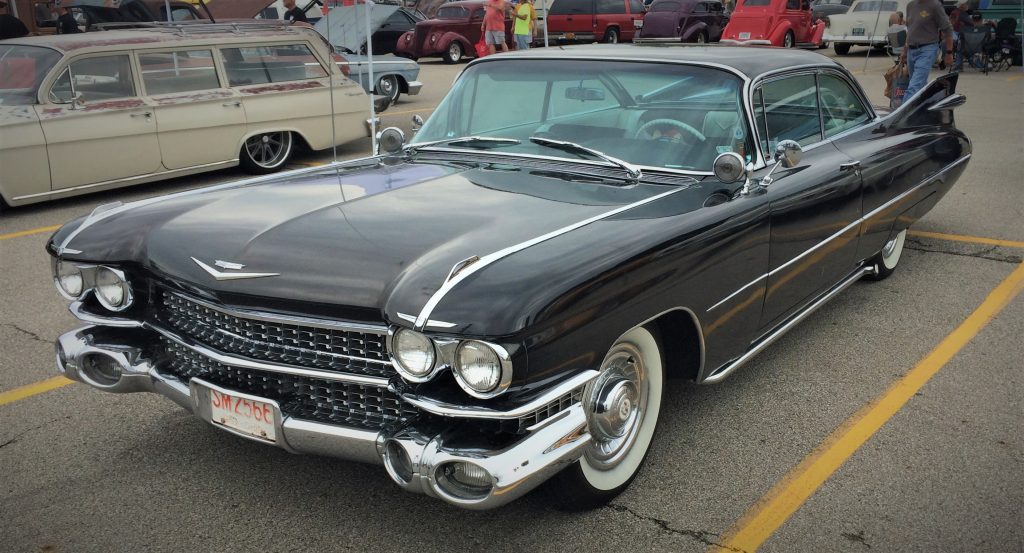
Laughing Gas: slang for nitrous.
Leadsled: a lowered, late-forties car with molded body seams, traditionally done with lead.
Louvers: vents or slots punched in body panels.
Lowboy: customized Model A Ford that has been channeled.
Lowered: a vehicle that sits lower than stock height through suspension or frame modifications.
Lowrider: a vehicle that has been lowered by a hydraulic suspension system that can bring the ride height up in order to drive it.
M-R
Mags or Mag Wheels: race-inspired aftermarket wheels; referred to as mags because early style race wheels were made from magnesium.
Matching Numbers: a restored or original vehicle in which all serial numbers (VIN, engine, body, transmission, rear end) can be researched and identified as being 100 percent correct for that specific vehicle.
Mill: slang for an internal combustion engine.
Molded: body seams that have been filled in or otherwise smoothed out.
Moons: full wheel covers that are chrome and convex-shaped.
Mother-in-Law Seat: a single seat attached to the back of a two-seater car. The forerunner of the rumble seat.
Mouse: slang for small block Chevrolet engine.
Muscle Car: a North American intermediate or mid-sized car produced between 1964 and 1972 (with a few exceptions) with a large displacement V8 engine.
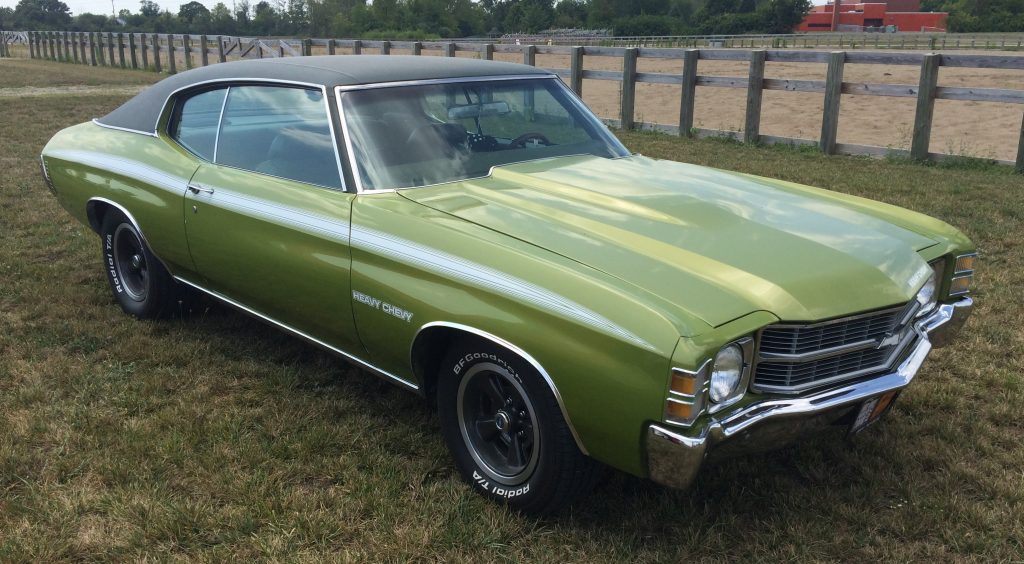
Nail Head: 1950s Buick engine
Nerf Bar: tubular bumper or step bar.
NOS: (New Old Stock) parts purchased from the manufacturer that were made at the time of the original vehicle but never sold. (Also an abbreviation for Nitrous Oxide System).
Nosed: chrome details and trim removed from the hood and smoothed over.
Original: contains only parts originally installed on the car or NOS parts from the manufacturer with no substitute or aftermarket parts.
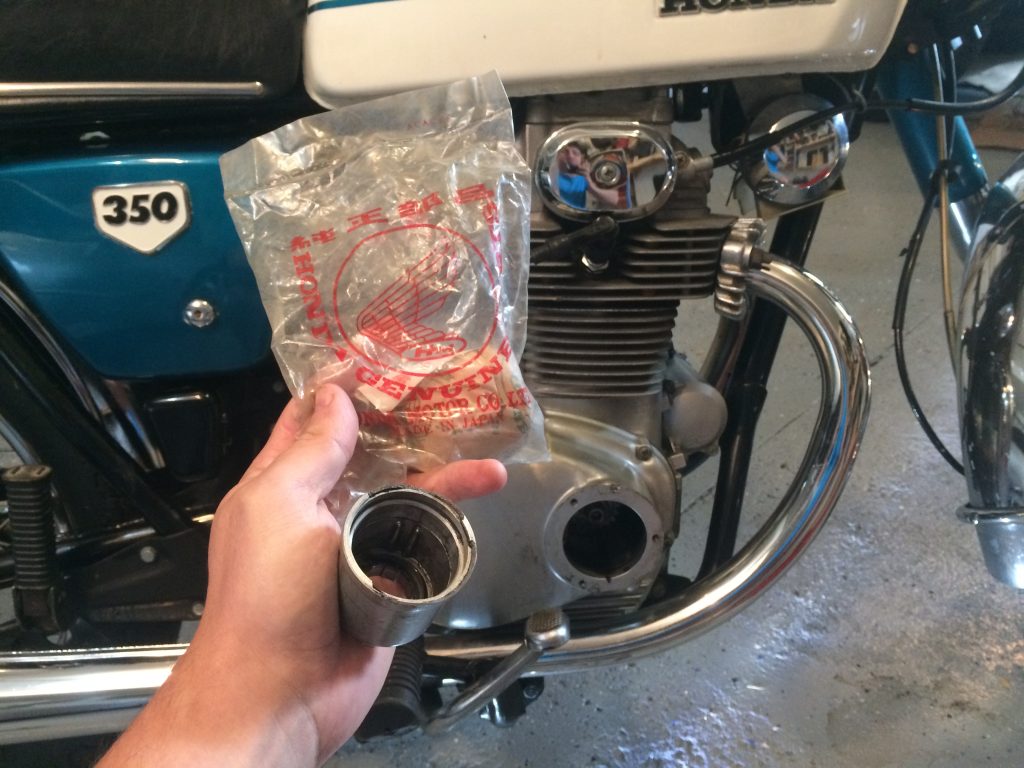
Pancaked: hood modified to a lower profile.
Peaked: a molded accent seam on a hood.
Pinched: to narrow the front frame to match the grill shell.
Pink Slip: before the days of automobile titles, the portion of a California car registration that conveyed ownership was colored pink.
Piped: narrow, padded pleats used to trim the interior.
Pony Car: a small, compact performance-oriented vehicle.
Ported: to polish and enlarge the intake and exhaust ports on cylinder heads.
Post: the pillar located between the front and rear doors of a four-door sedan.
Powerplant: slang for an internal combustion engine.
Project Car: a vehicle that is in restorable condition.
Pro-Street: a street/strip-style vehicle that features large rear wheels and tires tucked deeply into the rear fender area.
Puke Can: a radiator overflow tank used to catch coolant.
Quarter Window: the side window behind the rear door.
Rake: the downward angle of a car with a dropped front suspension.
Raked: a design in which the front end has been lowered more than the back.
Rat: slang for big block Chevrolet engine.
Rat Rod: a style of hot rod that imitates the early rods of the 1940s-60’s, featuring an unfinished, rough, or patina appearance.

Replicar: a completed reproduction of an existing automotive design, usually sold only 100 percent complete car.
Resto Rod: an original looking car with a modified chassis or powerplant.
Restored: to return a car to its original showroom condition.
Roadster: a convertible without side windows.
Roll Pan: smoothed out panel that replaces the bumper and rolls back under the vehicle.
Rolled: bumper or gas tank removed and replaced with custom panel that “rolls” under.
Rolled & Pleated: deluxe interior sewn with padded pleats.
Rumble Seat: an open, fold-up rear seat located where the trunk would be.
Running Board: the metal strip running between the fenders and below the doors of early autos and trucks used as a step or to wipe one’s feet before entering the vehicle.
S-Z
Sectioned: removing a horizontal section of bodywork to lower the overall height of the body.
Sedan Delivery: a two-door station wagon with solid body panels instead of windows on the sides at the back of the car.
Shaved: door handles and body trim that have been removed and smoothed over.
Shoebox: nickname for 1955-57 Chevrolet cars and 1949-51 Ford cars.

Sidemount: a spare tire recessed into the front fender.
Six-Pack: three two-barrel carburetors.
Slammed: a significantly lowered vehicle, usually dropped as low as possible and still driveable.
Sleeper: a vehicle that doesn’t look as fast as it is.
Slingshot: a front-engine dragster.
Slushbox: an automatic transmission.
Split Window: usually referring to the rear window, this window has two planes of glass with bodywork in between.
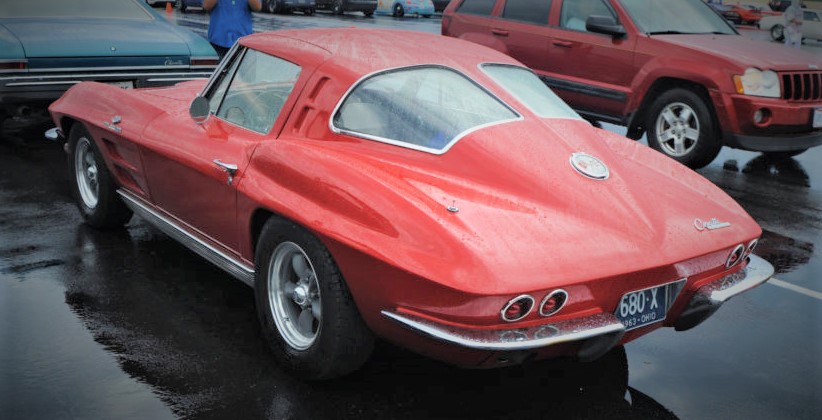
Spyder: a light two-seat roadster.
Steelies: solid, stamped-steel wheels.
Stovebolt: a hot rod running a Chevrolet straight inline six-cylinder engine, which had cylinder head bolts similar to those on wood burning stoves.
Strangler: slang for a carburetor choke.
Street Machine: a street-legal highly modified car or truck built in 1949 or later.
Street Rod: a street-legal highly modified car or truck built in 1948 or earlier.
Stretched: a vehicle with a body that has been stretched to lengthen the overall size of the vehicle or to accommodate larger tires.
Stroked: an engine which has been modified with a longer piston stroke thereby increasing displacement.
Suede: primer
Suicide Door: a door that hinges at the rear.
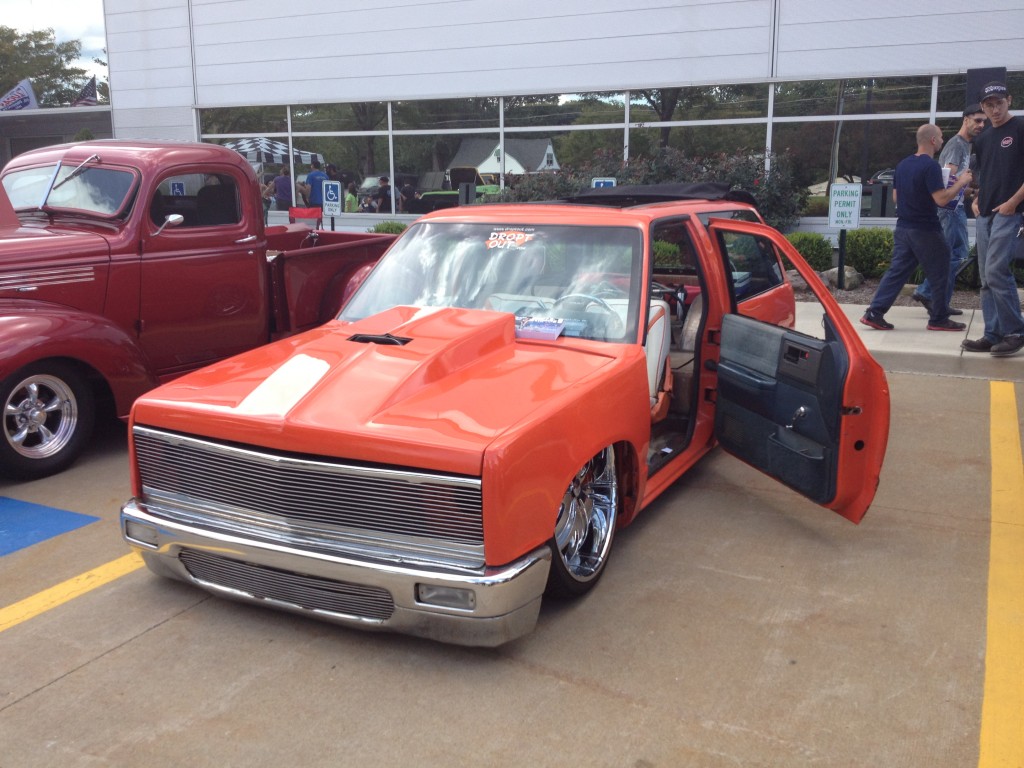
Supercharger: a crank driven air-to-fuel mixture compressor which increases atmospheric pressure on the engine, resulting in added horsepower.
Survivor: an original, unrestored, unmolested antique car that is in good enough condition to be used as a model for the restoration of a similar car.
T-Bucket: fenderless, topless, highly-modified Ford Model T.
Teardrops: 1939 Ford taillights, which have become very popular on custom hot rods.
Trailer Queen: derogatory term referring to a car that is shown frequently yet rarely driven.
Tri-Five: nickname for 1955-57 Chevrolets
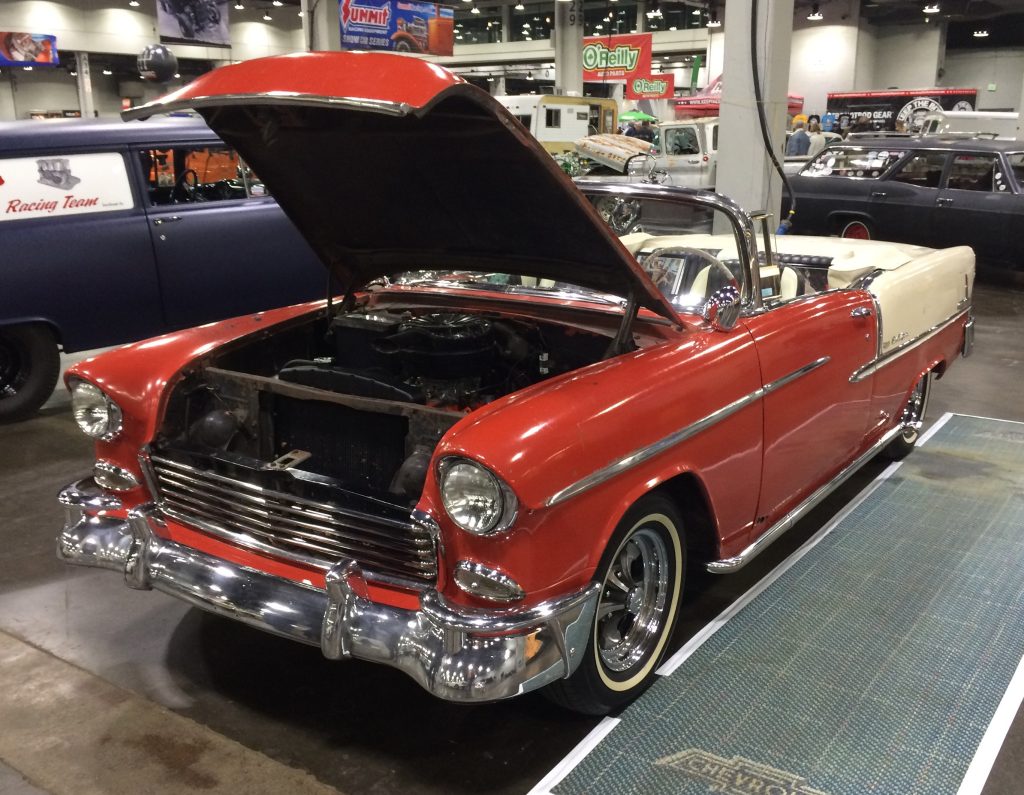
Tri-Power: an engine with three two barrel carburetors.
Tubbed: having the rear frame and body modified to allow for extra-wide wheels and tires that do not protrude past the fenders.
Tudor: a two-door Ford sedan.
Turnkey: a completely finished hot rod built by a professional shop and requiring no additional work.
VIN Vehicle Identification Number: the vehicle serial number that is stamped onto the vehicle, usually under the windshield post, the driver’s door post, or on the firewall.
Vintage: a vehicle built between 1915 and 1942 in stock or unmodified condition.
Wheelie Bars: rods that extend from the back of a car and are connected to wheels that help keep the car from flipping backwards during sudden acceleration.
Whitewalls: tires that have a concentric white line.
Woody: a vehicle that incorporates natural finished wood for structure of exposed body panels.
Zoomies: open headers that exit at the side of a vehicle and are pointed upward.
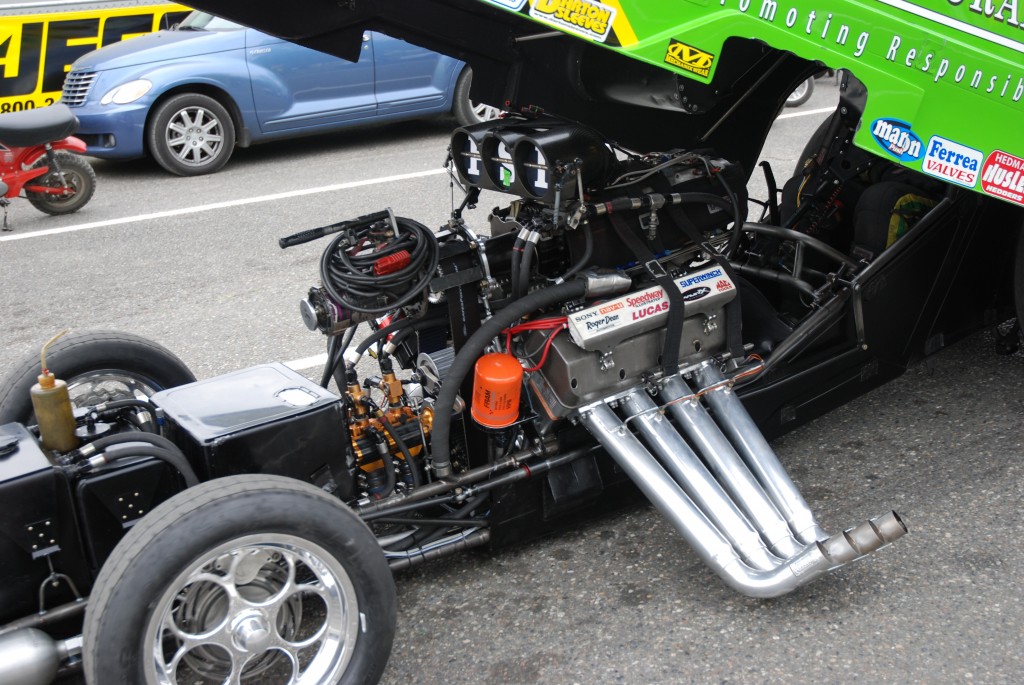

[…] Gearhead vocabulary is a colorful collection of terms that’s nearly impossible to understand for the flatheads out there who don’t talk the talk. But how many of us are fluent in “rubberese”? Truth is tires speak a language all their own, and the ability to decipher those numbers and letters branded around the sidewall is even more important than knowing your stacks from your steelies. […]
[…] survive in a gearhead world, you’ve got to know the lingo. That’s why we compiled an A-Z Glossary of Hot Rod Terminology to help speak the language. It’s OK to admit it–you probably don’t know […]
[…] created an entire dictionary dedicated hot rod lingo, but before you check it out, put yourself to the test. Take our quiz on some of our favorite hot […]
Bellflowers – Chrome exhaust pipes that extend along and under the body behind the rear wheels.
Lifts, hydros – Hydraulic suspension that alters a vehicle’s height
Ported & Relieved (didn’t do one without the other)
Lakers
Cutouts
More terms to I.D.